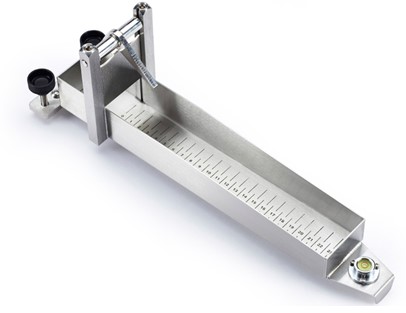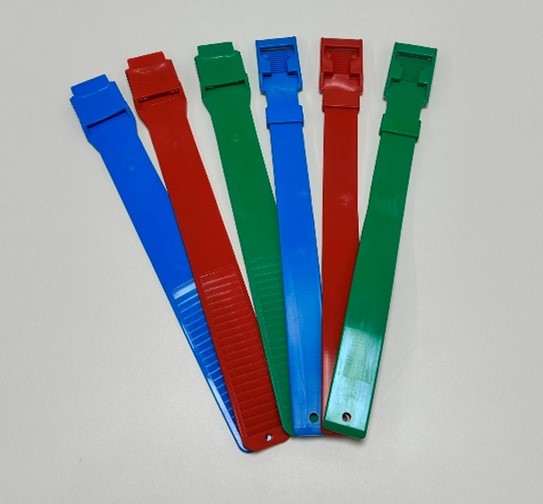Digital clinic: how and why Moscow switched to electronic medical records

 PIONEER MEIZHENG BIO-TECH (5 in1) JC0586 - Antibiotic tests 5 in 1 / Rapid tests for determining the residual amount of β-lactams, tetracyclines and cephalexin in milk, whey
PIONEER MEIZHENG BIO-TECH (5 in1) JC0586 - Antibiotic tests 5 in 1 / Rapid tests for determining the residual amount of β-lactams, tetracyclines and cephalexin in milk, whey Express tests for determining the residual amount of β-lactams, tetracyclines, chloramphenicol, streptomycins in milk, whey
Express tests for determining the residual amount of β-lactams, tetracyclines, chloramphenicol, streptomycins in milk, whey
Since August 2022, all children's polyclinics in Moscow have switched to using exclusively electronic medical records (EMRs). This has become one of the largest healthcare digitalization projects in the country. Paper medical records have already begun to be transported to the Main Archives for storage, and comfortable spaces for doctors are being equipped in place of the former map storages in polyclinics - rooms for professional growth and rest rooms. Doctors will be able to gather for trainings and master classes, discuss scientific projects and work tasks. Anastasia Rakova, Deputy Mayor of Moscow for Social Development, spoke about this in early August.
“This is convenient for parents of young patients: you no longer need to parse the doctor’s handwriting, worry about losing the card or that it will fade or deteriorate,” the Deputy Mayor noted.
Anastasia Rakova (Photo: press service of the Moscow Social Development Complex)press service of the Moscow Social Development Complex)press service of the Moscow Social Development Complex)press service of the Moscow Social Development Complex)press service of the Moscow Social Development Complex)press service of the Moscow Social Development Complex)press service of the Moscow Social Development Complex)press service of the Moscow Social Development Complex)press service of the Moscow Social Development Complex)
All key medical information about the child is now at the parent's fingertips, right in the smartphone. Accordingly, at any time and in any place, this data can be shown to specialists from city, federal or private clinics. Moreover, the new generation of Muscovites will no longer even be familiar with paper maps, certificates and analyzes pasted there: another important aspect of their life will be completely digital. Pediatricians will no longer have to look for research results, previously diagnosed diagnoses, and much more in paper maps. Now the specialist sees all the necessary data in the patient's electronic record in a convenient structured format.
The city authorities have been engaged in the digitalization of healthcare in general for about ten years. The basis of this process is a single digital platform. It provides personalized management of each patient at all stages - from diagnosis, treatment to follow-up. Thanks to it, all data on the HEALTH status of citizens is accumulated in a single digital circuit and is available online to both doctors and patients themselves.
Photo: press service of the Main Archive of Moscowpress service of the Main Archive of Moscowpress service of the Main Archive of Moscowpress service of the Main Archive of Moscowpress service of the Main Archive of Moscowpress service of the Main Archive of Moscowpress service of the Main Archive of Moscow Modern approach to the patient
For patients, an electronic medical record is convenient, first of all, because medical information is stored in a single digital environment in electronic form, they will not be lost and will always be available to both any DOCTOR in the capital and the citizens themselves. You can get acquainted with the doctor's recommendations and research results in the EHR section on the mos.ru portal or in the EMIAS.Info mobile application.
In the electronic medical records of children, parents can see information about the current prescriptions issued, discharge epicrises from the hospital and data on ambulance calls. The EHR contains certificates of temporary disability and a history of vaccinations. At the same time, it is possible to both upload documents from the medical record to a smartphone or computer, and add a number of medical documents to it.
“There are already positive experiences with EHR in commercial clinics. We can say that today it is already the basic tool for the work of modern healthcare, ”Sergey Lezhnin, CEO of the Doctis group of companies, told RBC. However, the databases of private clinics are not connected either with state ones or even with each other, the expert complains. Accordingly, the creation of a unified system of electronic medical records on the scale of the largest city in the country is already a fundamentally different level.
“Healthcare in general needs a unified information system that includes telemedicine services, EHR, and a data management system within the clinics themselves,” says the expert. “But work is underway, medical information systems are being created in the regions, and we assume that in three to four years a unified system will already be created.”
Moscow has already created such a unified information system - the Unified Digital Healthcare Platform, which operates on the basis of EMIAS and includes, among other things, electronic medical records. The transition of all metropolitan children's clinics to an electronic file is a continuation of work in this direction.
According to Lezhnin, the main advantage of electronic medical records is the systematization of all information about a person’s medical history, research results, prescriptions, vaccinations and simplification of access to it for both the patient and the doctor. This directly affects both the speed of patient care and the quality of the consultation and the chosen therapy.
“This is a way to reduce costs and reduce the cost of processes for the healthcare system, as in the case of the introduction of other digital services. Information about the medical history of people is a huge amount of data that can no longer be stored, processed and used in paper form. At the same time, data security is ensured as strictly as in the case of banking data and any personal information,” Lezhnin specified.
End of "double work"Thanks to the EMR, all medical data about the patient is stored in a single digital environment in a convenient structured format, which allows you to quickly find the necessary information during the appointment. At the same time, an electronic medical record gives the patient access to medical information around the clock, and this information can be provided to any attending physician - in city, federal or private medical institutions. After all, all documents from the EMC can be downloaded and printed, or sent by e-mail or using a messenger.
Children's City Polyclinic No. 110 in the north of the capital in the spring of 2021 became a pilot base for the project to switch to EHR. According to Elmira Kashirina, the HEAD physician of the polyclinic, the refusal of paper media caused great delight among doctors, as it freed up additional time for examining patients due to the refusal of “double work”: before, doctors worked simultaneously with digital and paper cards. The polyclinic staff was also pleased with the feedback from the system developers, who promptly eliminated inaccuracies and implemented the wishes of pediatricians.
Entrance to DGP No. 110 (Photo: press service of the Moscow Department of Health)press service of the Department of Health of Moscow)press service of the Department of Health of Moscow)press service of the Department of Health of Moscow)press service of the Department of Health of Moscow)press service of the Department of Health of Moscow)press service of the Department of Health of Moscow)
“We used to have a map storage, but for the last few months we have practically not used it, since there was no need for it, everything is already digitized and available in the EMK,” Kashirina said. - Now the space that doctors really need is freed up. Medicine is developing by leaps and bounds and involves constant learning, so that the vacant area will be re-equipped for the professional growth of doctors.”
According to the head physician of Children's State Clinical Hospital No. 110, webinars, conferences, round tables, etc. can now be held in the former map storage room. In addition, this room will be equipped with equipment with access to modern medical databases so that doctors can use them for professional development.
In turn, Lezhnin from Doctis also considers the ability to work with data, analyze it in an aggregated form using modern technologies, which can provide important information about the patterns in the course and treatment of certain diseases, to the advantages of electronic charts for specialists.
What will happen to paper medical records?According to the deputy mayor of the capital, Anastasia Rakova, paper medical records have already begun to be transported to the new robotic cluster of the Main Archive. Documents will be stored in specialized boxes, which are located in an environment with low oxygen content. In addition, the safety of the archive will be ensured by an integrated security system, including video surveillance and access control accounting.
Conveyor in the new cluster of the Main Archive (Photo: press service of the Main Archive of Moscow)press service of the Main Archive of Moscow)press service of the Main Archive of Moscow)press service of the Main Archive of Moscow)press service of the Main Archive of Moscow)press service of the Main Archive of Moscow)press service of the Main Archive of Moscow)press service of the Main Archive of Moscow)press service of the Main Archive of Moscow)
“The storage area in the new cluster is almost 70 thousand square meters. m, and in this space, if necessary, it is possible to store up to 100 million units of paper materials at the same time. Thus, we are freeing up huge areas of map storages in polyclinics - and this is about 10 thousand square meters. m,” added Rakova.
How to view EHR: user manualEach person attached to the Moscow polyclinic has an electronic medical record with a complete history of appointments, tests, tests and vaccinations from 2017-2020, depending on the service. For example, you can see doctor appointments from 2017, and lab results from 2019. PCR tests for covid-19 and vaccinations against it have been visible since 2020, when they began to be performed.
You can open access to the electronic medical record through the mos.ru portal. To do this, you need to log in to the site, enter passport data into the profile, and if you need to see the medical records of children, then information about them. If the passport data on the site has already been entered and verified, just click "Go to the medical card" immediately.
The interface of the electronic medical record is simple and clear. The information is divided into blocks according to the types of services: "My appointments at the clinic", "My tests", "My medical examination", "My sick leave". The numbers next to the blocks indicate the number of entries.
The data inside the blocks opens directly on the medical card page, where you can see a brief description of the admission or analysis, you can view or download the result.
In the electronic medical record, patients can see all the information about visiting state medical institutions:
appointments of doctors with the date and data of the doctor; information about vaccinations and vaccination certificates; results of analyzes and studies; information about calling an ambulance; hospital discharges; data on certificates, prescriptions and sick leave certificates; dispensary information.Users over the age of 15 who have a compulsory health insurance policy can access the EHR. If the application comes from a Muscovite with a standard account on mos.ru, access will be granted within five business days, if a full account is available, on the day the application is submitted. If information about minor children (including wards) is confirmed in the personal account, then access to their electronic medical records is also provided in a proactive mode. To view the details of the medical card, you should go to your personal account in the EMIAS system.
Read together with it:
- The Russian Ministry of Agriculture proposes extending veterinary regulations until 2032.The extension includes regulations for the prevention and eradication of diseases such as bradsot (Clostridium septicum), trichinosis (Trichinella), blackleg (Clostridium chauvoei), and porcine reproductive and respiratory syndrome (PRRS). The proposed changes stipulate the following new deadlines: for bradsot and trichinosis - from March 1, 2......
- A fire at the Merci Agro Sakhalin pig farm killed 1,500 pigs, but pork production will not be affected.Deputy Minister of Agriculture and Trade of the region Inna Pavlenko noted that other pig farms will help compensate for the loss. Merci Agro Sakhalin plans to restore its capacity and livestock, which will help avoid a pork shortage on the local market. The restoration will be funded by insurance payments, and veterinarians have already analyzed the condition of the remaining animals and determin...
- An HSE expert reported on the "evolution of inequality" in access to healthcare.An HSE researcher analyzed Russians' access to healthcare over a ten-year period. In 2021, the influence of financial factors became noticeable for the first time: low income reduces the likelihood of visiting a DOCTOR.Over the ten years from 2011 to 2021, the number of Russians requiring medical care but not receiving it remained virtually unchanged, according to a study by Lyudmila Zasimova, hea...
- The IEA sees a risk of a decline in oil production in Russia due to sanctions.The IEA sees a risk of reduced oil production in RUSSIA due to US sanctions , but maintains its production forecast. According to the IEA, Russian oil exports will remain unchanged.There is a "significant downside risk" to Russia's oil production forecast due to US sanctions, the International Energy Agency (IEA) said in a report.BLOOMBERG . The agency's experts believe that the latest US sanction...
- UniCredit заявил о галактических усилиях из-за санкций против РоссииUniCredit старается не нарушить «более 15 тыс. санкций», а также не «совершать ошибки», которые позволят изъять его активы в России, заявил гендиректор. После начала военной операции банк начал рассматривать возможность ухода Итальянский банк UniCredit прилагает «галактические усилия», пытаясь соблюсти международные санкции в отношении своего российского подразделения. Об этом заявил генеральный д...
- "Коллективы АПК способны решать любые задачи даже в непростых условиях". Назаров о заслугах сельхозпроизводителейЮрий Назаров 13 ноября, Минск. Обеспечение продовольственной безопасности страны - большое достижение трудовых коллективов аграриев, отметил управляющий делами Президента Республики Беларусь Юрий Назаров на торжественной церемонии награждения государственными и иными наградами работников АПК Управления делами Президента Республики Беларусь, передает корреспондент БЕЛТА. Торжественная церемония наг...


























































